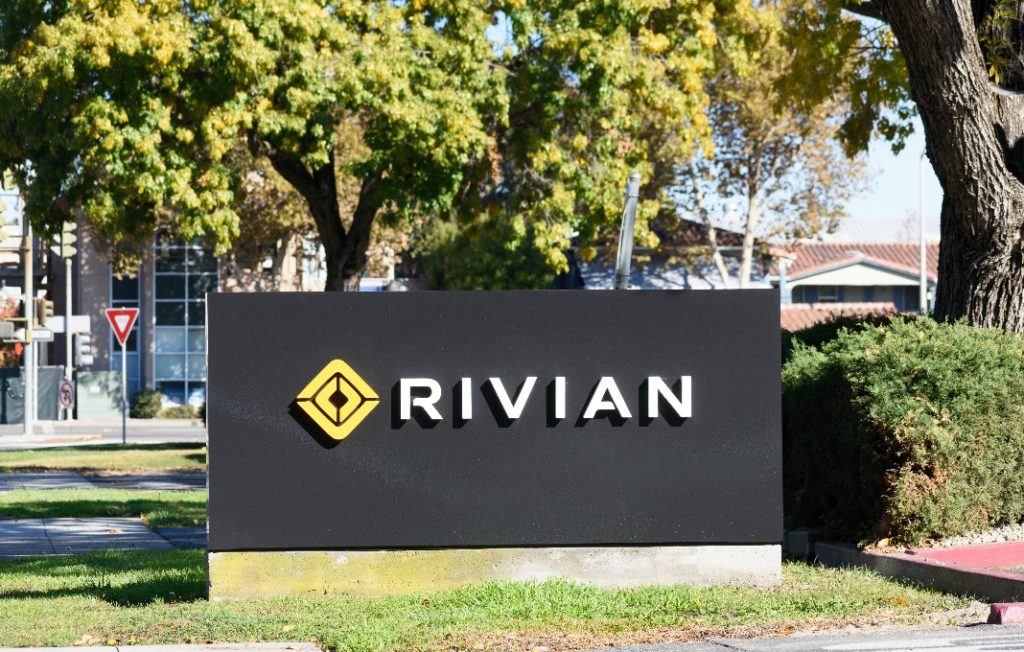The global electric-vehicle derby is getting a lot more interesting, and it’s not just about the recent IPO by Rivian that reached Muskian proportions. In America, the maker of all-electric trucks is just part of a furious new scramble among the states for the economic fruits of a coming EV-manufacturing boom among U.S.-based automakers. And foreign OEMs also keep announcing big new investments.
Rivian has moved center stage these days because of its staggering IPO last week at a price of $78 per share, one of the largest initial public offerings ever for a U.S. exchange. The offering raised $11.9 billion, the largest haul for an IPO on an American exchange since 2014 and the seventh-largest since 1995, according to Dealogic.
Despite the fact that all-electric vehicles reached only 2.5% of the U.S. retail car market in the first half of 2021, up from 1.8% for all of 2020, investors are excited about Rivian for a few reasons. They include the fact that, like Tesla, it’s making vehicles in Illinois, at a refurbished Mitsubishi factory, while several other EV makers remain essentially in the starting blocks.
Even more attractive to investors is the category of the transportation market at which Rivian is aiming: commercial vehicles. Rivian already has the best commercial-vehicle customer in the world, Amazon, which owns 20% of the company and has pledged to purchase 100,000 delivery vehicles from Rivian. And overall, e-commerce companies and others with big delivery fleets represent relatively low-hanging fruit for EV makers, compared with the more difficult proposition of getting individual consumers to buy all-electric models.
Rivian’s other big backer also gives the company a huge shot of legitimacy. Ford owns about 12% of Rivian, having beaten out cross-town rival General Motors for the privilege a couple of years ago. And while Ford has plans for electrifying its commercial fleet, including with Rivian, it’s reassuring to many investors that Ford believes it can move tectonically to electrification of its trucks even though America’s best-selling vehicle for decades has been the gasoline-powered Ford F-150 pickup truck. One of Ford’s first major electrification gambits has been coming up with the F-150 Lightning, an all-electric version.
Rivian and Ford also are at the center of another important arena in the seemingly inevitable march of automotive electrification: economic development.
Desperate to regain some traction in an economy that keeps losing companies and people California-style, for some of the same reasons, Illinois officials have been trying to leverage Rivian’s success in their state by casting their state as a welcoming haven for all EV manufacture. The legislature has passed a series of tax incentives for EV makers that they hope will turn Illinois into an EV-assembly hub, including income-tax credits for EV makers and suppliers to 75% to 100% of payroll taxes for new employees they hire, for up to 15 years. The initiative also includes tax credits for hiring construction workers and training employees.
The bill awaits the signature of Governor J.B. Pritzker. But some analysts believe it could only be incidental to EV makers. Such tax incentives can’t make up for any “fundamental deficits” a state might have when it comes to a skilled workforce or logistics, Kristin Dzcizek, senior vice president of research at the Center for Automotive Research, in Ann Arbor, Michigan, told Automotive News.
For its part, Ford set off major celebrations in Tennessee and Kentucky recently when the company announced recently that it would invest $11.4 billion in the two states on electric-vehicle production complexes. The states’ electricity rates and the availability of adequate “shovel-ready” tracts were two of the things that helped attract Ford to make such big commitments in the mid-South.
But while great additions to the already-substantial base of automotive manufacturing in the region, Ford’s announcement was met with dismay and recriminations in Michigan, where the company is headquartered in Dearborn. Governor Gretchen Whitmer and industry groups used the occasion to push quickly for the establishment of a $100-million fund for industrial “megasites” of the type that Ford said weren’t sufficient for the company to put its new EV investments in Michigan.
Meanwhile, Toyota’s announcement that it would build a battery plant in North America to feed its regional production of electric and hybrid vehicles has set off a frenzy of site-related in Kentucky, where the company builds conventional cars; in Texas, where it builds pick-up trucks; and in other states where it has a manufacturing presence such as Indiana and Alabama.
The company has said it won’t set off a bidding war for the battery facility—which, speculation holds, also might be joined by a plant that would assemble EVs—but the estimated $3.4 billion in new investment by Toyota is likely to go to one of those states.
Automakers also are continuing to invest like mad overseas in new EV facilities. Just this week, for instance, Volkswagen announced that it would build a new, state-of-the-art EV-assembly plant near its headquarters in Wolfsburg, Germany.









